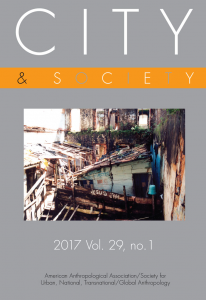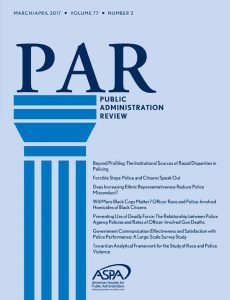The Sociology Classroom: Critical, Transformative, Radical? Part 3 of 3. Radical Pedagogy & Practice

Source: Luiz Carlos Cappellano (Own work) [CC-BY-SA-3.0], via Wikimedia Commons.
[This article is the third and last in a series that explores theories behind critical/ radical/ transformative education in the sociology classroom, as well as its practice, problems and limits. The first article introduced some theories behind critical pedagogy, and its overall framework; the second article addressed some radical critiques of certain versions of radical pedagogy.]
As discussed in my previous articles, instructors committed to critical or radical pedagogies most often rely on Freirean concepts, emphasizing the reduction of teacher-student hierarchies and aiming for classroom dialogue rather than monologic lectures. On other hand, some radical teachers have argued that learner-centered models are actually counterproductive since they help to veil actually existing power structures. One possible way of implementing the goals of radical pedagogy while still taking seriously these criticisms is described by Solorzano (1989) who uses the ‘problem-posing method’ developed by Freire: First, he let students identify a social problem of relevance, then has them analyze the causes of this problem before discussing possible solutions. More than that, though, he encourages students to engage in social practice in order to set these solutions in motion.
It is this connection between scholarship and social practice that allows for reducing classroom hierarchies while still allowing students to experience the impact of systems of power and oppression on their lives. One extensive attempt at this form of radical pedagogy that emphasizes democratic classroom dynamics and social practice is Braa and Callero’s (2006) attempt to connect classroom instruction and social praxis/ activism more explicitly. They define critical pedagogy as “a radical approach to education that seeks to transform oppressive structures in society using democratic and activist approaches to teaching and learning” (357). Thus, critical or radical education implies a commitment to the transformation of both education and society, a transformation of both the individual and the community. They acknowledge education’s role in reproducing a system of hierarchies and class oppression but also point out the emancipatory potential of education, pointing out that educational institutions can foster counterhegemony and serve as spaces for social change. In order to achieve these goals, pedagogy must address four key elements: Dialogue, critique, counter hegemony and praxis. In dialogue, teachers and students transcend monologic ways of knowing and instill a critical consciousness in students. In critique, students develop critical analyses of self, society and their interrelations, and ultimately create a counter hegemony against dominant narratives and systems of oppression. Finally, students engage in praxis, a collective and collaborative push for transformation that moves beyond individualistic solutions to social problems.
The way these commitments play out in Braa and Callero’s teaching practice is in the form of a course sequence that involves both critical analysis and the building and sustaining of real-life grassroots organizations – in their example, a tenants union. They specifically emphasize the importance of the Marxian notion of praxis and argue that experiences of collective struggle – and the adversarial reactions by those in power – contribute to enabling students to develop a political self. Experiencing tensions and contradictions thus plays out in the real-life struggles the students are involved in.
Of course, engaging in these radical teaching projects comes with limits and institutional constraints. Not only does radical teaching likely require a larger time commitment – while at the same time teaching is not highly valued in tenure and promotion decisions – but it may also result in less social capital within the discipline and institution. Ironically, it may also result in negative teaching evaluations as students may not appreciate being asked to become active participants in their course, much less activists in the real world.
Given these constraints, Sweet (1998) calls for finding a balance between institutional demands and radical teaching philosophies, finding openings to connect with student-led activism, making the material relevant to local struggles and carving out spaces for more radical pedagogies within the constraints of the institution. Gaianguest (1998) goes further and argues that rather than trying to solve these tensions individually, radical teachers need to understand themselves as agents of chance and should focus on three areas – teachers, institutions, students: When it comes to teaching, radical scholars need to find ways to transition from the role of teacher or instructor to the role of guide, facilitator and resource person, transforming the classroom situation from one of education to one of mutual learning, rather than simply tweaking lectures or adding the occasional activity without changing the basic classroom experience. In terms of the institution, Gaianguest calls for engaging in politics at the local and institutional level in order to change the rules of the game, first by building a movement of colleagues committed to similar pedagogical ideals and then pressing for real transformations, rather than ‘balancing’ the tensions between ideals and constraints individually. Lastly, she argues for a renewed focus on the learning process and for connecting content knowledge to the real life struggles of the student population, thus transforming the classroom into a space of continual social change.
Interestingly, Braa and Callero, point out that ultimately they received only minimal formal hostility toward their innovative and unusual course design and pedagogy. Therefore, they advice radical sociologists to keep in mind that – despite popular myths that want to portray sociology as ‘biased’ and other disciplines as ‘neutral’ and ‘objective’ – disciplines and their community-related projects (for instance, internships with corporations and law enforcement in economics or criminology) also have leanings toward certain intellectual traditions and ideologies: For example, the predominance of neoclassical teachings in business schools and economics departments around the country is itself far from unpolitical, unbiased or neutral. In other words, instead of being deterred by worries of institutional backlash, radical sociologists should not be afraid to take a stand.
—
FURTHER READING:
bell hooks. 1994. Teaching to Transgress. Education as the Practice of Freedom. New York: Routledge.
Freire, Paulo. 2007. Pedagogy of the Oppressed. New York: Continuum.
Spector, Alan. Marxist Pedagogy as a Process. ASA TRAILS: Marxist Perspectives Modul 58.
—



1468-0491/asset/society_affiliation_image.gif?v=1&s=859caf337f44d9bf73120debe8a7ad67751a0209)
1467-7660/asset/DECH_right.gif?v=1&s=a8dee74c7ae152de95ab4f33ecaa1a00526b2bd2)